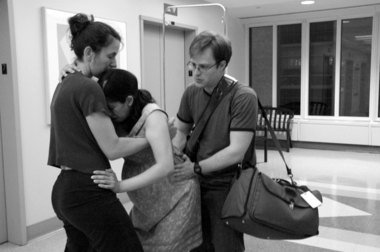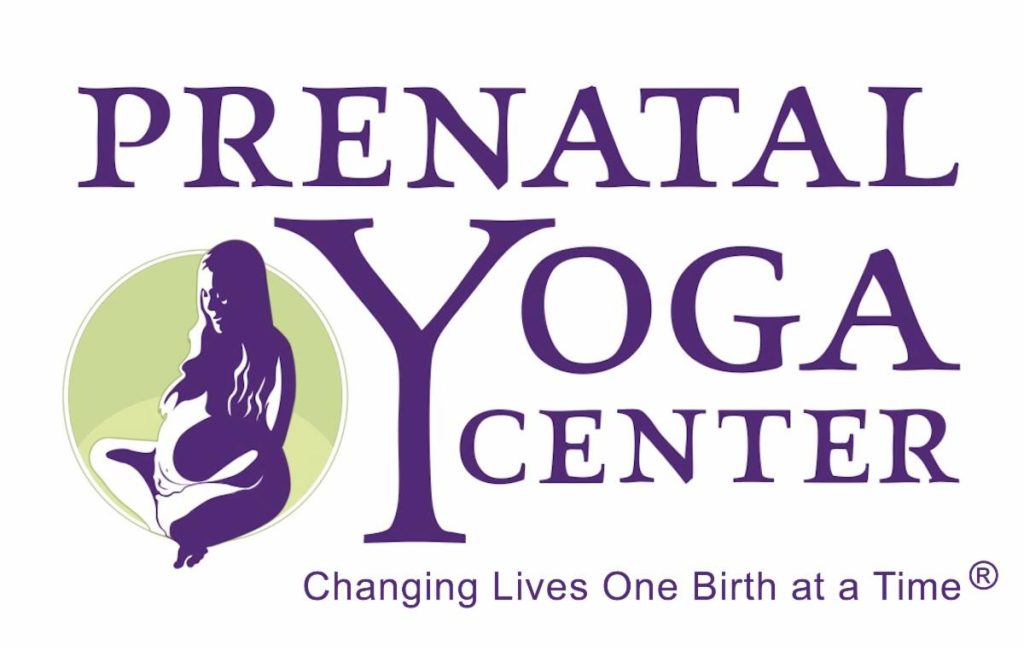Why is it that whenever I see a movie where a woman is in labor, the people taking care of the woman have her sit down, lie down or put her in a wheel chair? It’s as if having the laboring mother walk or move on her own is a bad idea that could cause her problems! In fact, moving during labor is highly recommended.
Back when I was actively doing doula work, I often encouraged my clients to walk to the hospital if that was possible. Given that most of my students lived on the UWS and many delivered at St. Lukes/Roosevelt (SLR), the walk was on average 20 blocks. Yes, we were often stopped and asked if we needed an ambulance, or a passer-by would share their thoughts with us on labor. But for the most part, it was often a nice, slow walk down to the SLR hospital. The walk gave the mother time to relax into the routine of her contractions. We would usually stop as the contractions arose and the mother would often lean on her partner, me or a building as she rocked and moved through the sensation. (I personally really like that many NYC sidewalks have scaffolding which turn into makeshift “squatting bars” for the laboring mama). The constant, gentle movement of the slow stroll also aided in easing the mother’s pain and anxiety, facilitated more regular and stronger contractions, and offered the added benefit of aiding the baby’s descent into the pelvis, which in turn created further cervical dilation and encouraged optimal birthing position.
If sauntering down the street does not sound ideal to you, there are other movements to try: getting on all 4’s and doing cat/cow or body circles, rocking on a birth ball, slow dancing with your partner, leaning against a wall and shifting from side to side, or pretty much anything that helps move your hips and keeps your body soft. Upright movement encourages the use of gravity, but any sort of movement that is comfortable also frees the bones of the pelvis to shift as the baby descends and adjusts while making its way down through the birth canal.
Another advantage of maintaining freedom of movement is, most women find that when they are naturally moving, they are able to better connect with their breath, helping them to relax and deal with the pains of labor. This is why at the PYC we practice a gentle form of vinyasa yoga where movement and breath are connected as the students move from pose to pose. We try to establish a relationship of connecting breath and movement so that when the mother is in labor, there is already a familiarity with utilizing the breath to help stay calm and relaxed, even when there is strong sensation happening in the body.
Besides my own personal experiences and beliefs of the benefits of movement during labor there have been many scientific studies supporting this idea as well. In a Cochrane review (2009) (a respected international organization that defines best practices based on research), the authors found that various upright positions, commonly employed by laboring women in other countries, reduced the length of the first stage of labor as well as the need for epidural analgesia (1). A 2003 study published in Nursing Research concluded that a laboring woman’s lower back pain is worse when she is lying down. A laboring mom can get the rest that that she needs without having more pain if she has options for resting other than lying on her back (2). Another study, published in the Journal of Midwifery & Women’s Health, found that in hospitals that did not routinely use interventions, such as continuous electronic fetal monitoring, and did not restrict food or drink in normal labor, women who spent at least half of active labor walking around decreased their chances of having forceps or vacuum-assisted births or cesarean surgery (3).
I hope you are now encouraged and excited about the possibilities of staying gently active and untethered and enjoying all the benefits of moving during your labor!
Photo Source ©Jada Shapiro, Birth Day Presence
Sources
1- Best Practices In Midwifery: Using the Evidence to Implement Change
2- Excerpt from Care Practice Papers from the Lamaze Institute for Normal Birth
3- Albers et al., 1997 http://www.ncbi.nlm.nih.gov/pmc/articles/PMC1948086/







